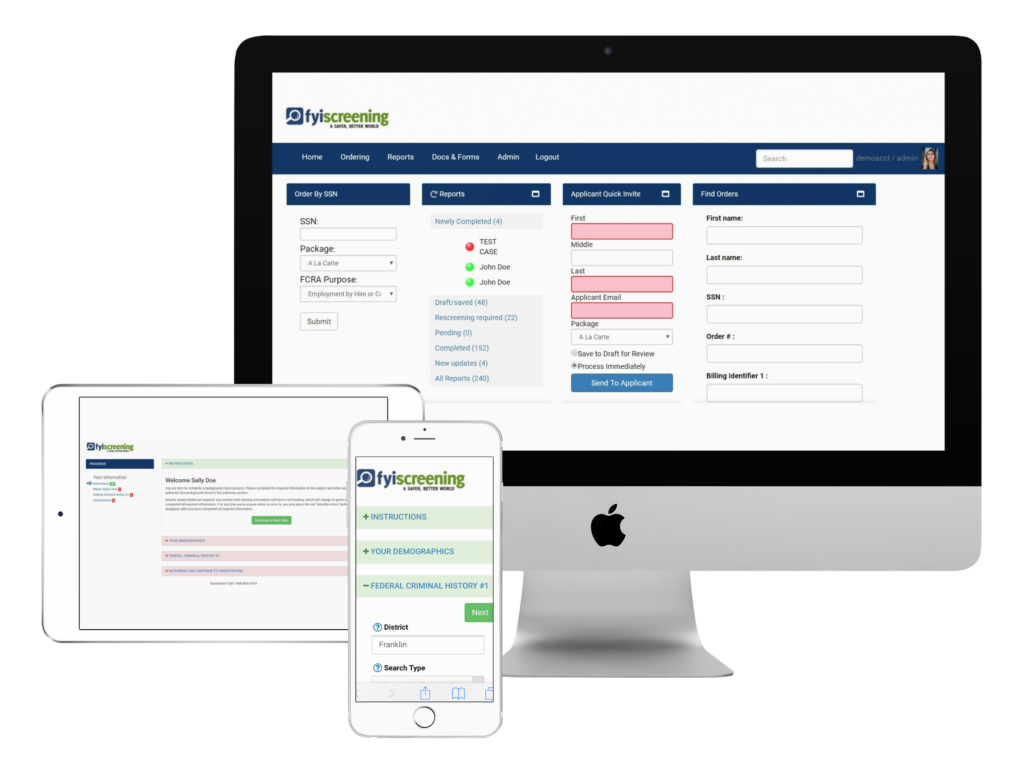
The hiring process can be stressful for candidates, and the background screening stage often adds to their anxiety. Many candidates are unfamiliar with what this process entails, leading to concerns about privacy, fairness, and delays. For HR teams, effective communication is key to ensuring candidates feel informed, respected, and confident in the process. Below, we explore strategies HR professionals can implement to improve communication during the background screening process, fostering trust and a positive candidate experience.
Provide Clear and Transparent Information
Transparency sets the foundation for trust. To ease candidate concerns and prevent misunderstandings, HR teams should prioritize clear communication about the background screening process from the outset. Here are three critical steps:
1. Inform Candidates Early
- Notify candidates at the beginning of the hiring process that background checks will be conducted. Early disclosure demonstrates transparency and gives candidates ample time to prepare.
2. Explain the Types of Checks
- Clearly outline the specific types of checks being performed, such as criminal history, employment verification, or educational credentials. Explain why these checks are relevant to the position, ensuring candidates understand their purpose.
3. Outline the Timeline and Steps
- Provide a detailed timeline and outline the steps involved in the screening process. Let candidates know what to expect and when, reducing uncertainty and setting realistic expectations.
Obtain Proper Consent
Obtaining proper consent isn’t just a legal requirement; it’s also an opportunity to build trust with candidates. Follow these best practices:
1. Use a Separate Consent Form
- Create a conspicuous and easy-to-understand consent form. Avoid bundling it with other hiring documents to ensure candidates can focus on its content.
2. Clearly Explain Purpose and Scope
- Include a clear explanation of why the background check is being conducted and what it covers. Transparency about the purpose and scope helps alleviate candidate concerns.
3. Answer Questions Before Consent
- Offer candidates the chance to ask questions about the process before they sign the consent form. This openness demonstrates your commitment to addressing their concerns.
Keep Candidates Informed
Regular updates can help candidates feel involved and reduce uncertainty during the screening process. HR teams can enhance communication by:
1. Providing Status Updates
- Regularly update candidates on the progress of their background checks. For example, let them know when the check has started, when it’s nearing completion, and when results are ready.
2. Using Multiple Communication Channels
- Utilize email, phone calls, and online portals to keep candidates informed. Offering multiple channels ensures accessibility and accommodates individual communication preferences.
3. Promptly Addressing Delays
- Notify candidates immediately if there are any issues or delays in the process. Proactive communication shows professionalism and respect for their time.
Offer Resources and Support
Providing resources and support can help candidates feel more confident about the background screening process. Consider these approaches:
1. Designate a Point of Contact
- Assign a dedicated person or team to handle candidate inquiries. Having a go-to contact ensures candidates can quickly get answers to their questions.
2. Share Educational Materials
- Provide materials explaining the background check process, such as FAQs, candidate rights, and what to expect. These resources can alleviate confusion and build confidence.
3. Guide Candidates Through Discrepancies
- Offer guidance on how to address potential discrepancies or negative findings. For example, if a candidate’s record contains outdated or incorrect information, explain the steps they can take to correct it.
Ensure Consistency and Fairness
Fairness and consistency are vital to maintaining a positive candidate experience. HR teams should implement the following practices:
1. Apply Uniform Standards
- Ensure all candidates for the same position are subject to the same screening standards. This approach prevents perceptions of bias or unfair treatment.
2. Communicate How Results Are Used
- Be upfront about how background check results will impact hiring decisions. Emphasize that the checks are intended to support informed hiring, not to exclude candidates unnecessarily.
3. Highlight the Goal of Reinforcement
- Reassure candidates that background checks are used to confirm their qualifications and suitability, reinforcing the hiring decision rather than acting as a barrier.
Implement a Dispute Resolution Process
Errors in background checks can occur, and candidates should have a clear path to address them. Implementing a transparent dispute resolution process helps candidates feel empowered and respected. Key steps include:
1. Explain the Dispute Process
- Clearly outline the steps candidates should take to dispute inaccurate information. Provide this information proactively, even if no discrepancies arise.
2. Provide Reports Upon Request
- Offer candidates a copy of their background check reports upon request. This transparency allows them to review and address any concerns.
3. Allow Candidates to Offer Context
- Give candidates the opportunity to explain any findings that may raise red flags. This approach shows a commitment to fairness and helps HR teams make well-rounded decisions.
Use Technology to Streamline Communication

Modern technology offers tools to simplify and enhance communication with candidates during the screening process. HR teams can benefit from these innovations:
1. Candidate-Friendly Portals
- Implement online portals that allow candidates to submit information, track progress, and access resources. User-friendly interfaces enhance the candidate experience.
2. Automated Notifications
- Use automated notifications to keep candidates informed at key stages, such as when the check begins, when additional information is needed, or when results are finalized.
3. Mobile-Friendly Options
- Ensure all communication tools and portals are mobile-friendly, allowing candidates to complete necessary steps on their devices for added convenience.
Summing It Up
A smooth and transparent background screening process can significantly enhance the overall candidate experience. By implementing clear communication strategies, offering support and resources, ensuring fairness, and leveraging technology, HR teams can create a process that inspires confidence and trust. These efforts not only improve the candidate experience but also reflect positively on your organization’s employer brand.
At FYI Screening, we specialize in simplifying the background check process for HR teams and candidates. Our technology-driven solutions ensure compliance, accuracy, and efficiency at every step.



